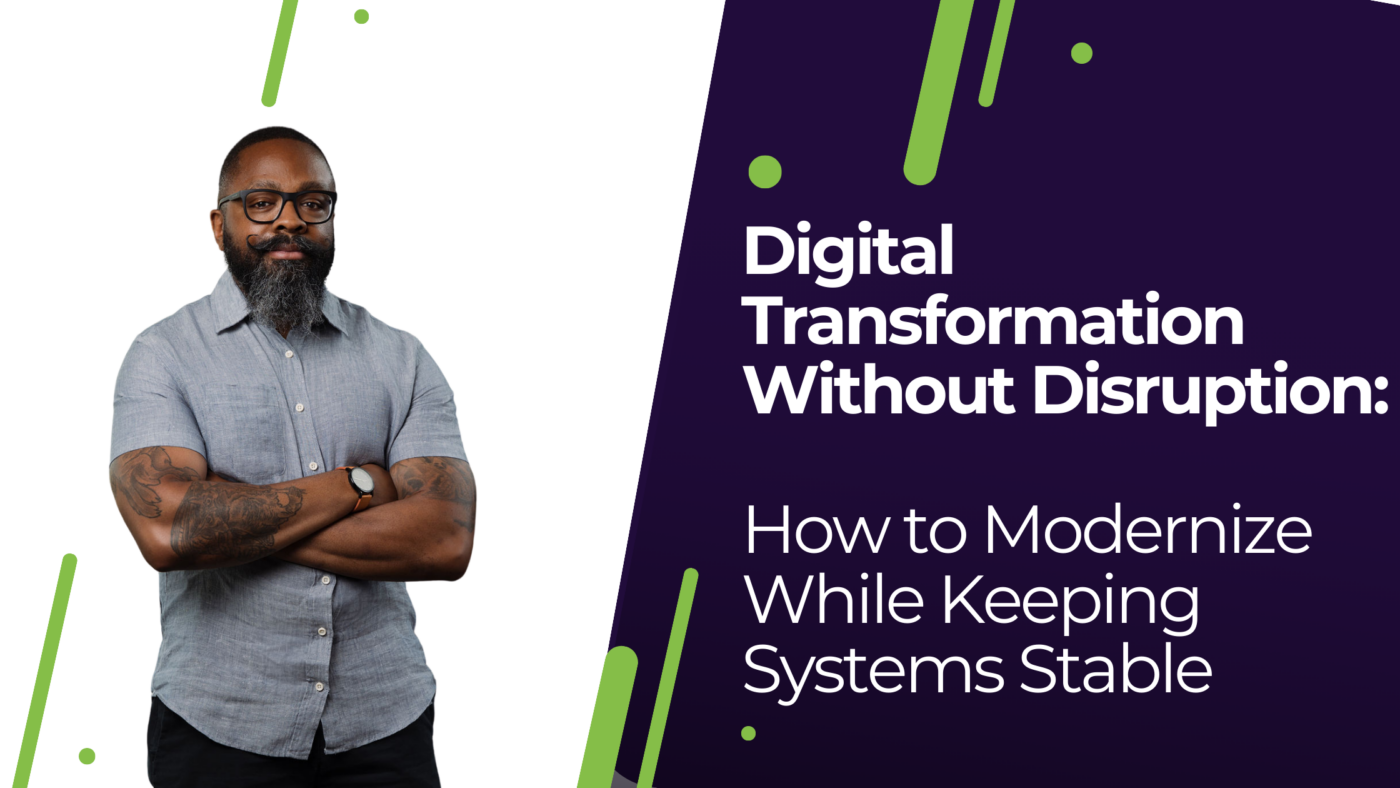
July 14, 2025
Searching for Gold (Standards) With Agentic Coding
April 1, 2025

Share:
Modernization is no longer optional for companies running on legacy systems. Outdated technology limits innovation, increases security risks, and raises operational costs. But for many CTOs and product managers, the challenge isn’t just upgrading systems—it’s doing so without breaking what already works.
The fear of disruption often leads companies to delay digital transformation, but inaction carries its own risks. Systems become more fragile, competitors move ahead, and technical debt piles up. The real challenge is modernizing without disrupting critical operations.
This is how companies are successfully updating legacy systems without causing downtime, risking compliance violations, or losing stakeholder trust.
Many digital transformation initiatives fail—not because they aren’t necessary, but because they aren’t executed strategically. The most common mistakes include:
Many companies believe that the only way to modernize is to replace entire legacy systems at once. This is rarely successful.
Large-scale replacements often lead to unexpected failures, downtime, and integration issues.
Employees resist change when they are forced to adopt completely new workflows overnight.
Legacy systems often hold critical business logic that isn’t well-documented, leading to knowledge loss.
Legacy systems are often deeply integrated with billing, customer databases, and internal reporting tools. Many companies don’t fully map out how one system’s upgrade will impact others, leading to downstream failures.
When companies fail to break modernization into smaller, manageable phases, the risk of disruption increases. Without incremental releases, it’s harder to test and adjust, making failures more likely.
Industries like finance and healthcare have strict security and compliance regulations. Rushing modernization without ensuring compliance from day one leads to audit failures, fines, and security vulnerabilities.
Instead of replacing everything at once, successful companies modernize in layers.
By modernizing one layer at a time, companies ensure that core business operations continue running smoothly.
Not all legacy components need to be modernized at once. The best approach is to identify the most fragile and high-risk systems and prioritize them.
One of the biggest mistakes in digital transformation is shutting down legacy systems too soon. Instead, modernized systems should run in parallel with older systems until stability is proven.
For companies in finance, healthcare, or any regulated industry, compliance can’t be an afterthought.
One of the biggest reasons transformation projects stall is lack of executive and stakeholder confidence. Instead of asking for approval on large, expensive projects with uncertain outcomes, show results through small, incremental wins.
Calvert, a FinTech company specializing in note servicing platforms, faced the challenge of automating their enrollment, investment, and account maintenance processes. They needed a solution that ensured compliance with financial regulations, protected sensitive data, and provided a seamless user experience.
By implementing a strategic and collaborative approach, Calvert successfully modernized its systems without disrupting existing operations. The new platform not only met compliance requirements but also improved user satisfaction and operational efficiency.
Digital transformation doesn’t have to mean ripping out old systems overnight or risking operational downtime. Companies that succeed in modernization follow these principles:
Modernization isn’t about disruption—it’s about engineering stability while moving forward. Companies that follow this approach don’t just survive digital transformation—they gain a long-term competitive advantage.